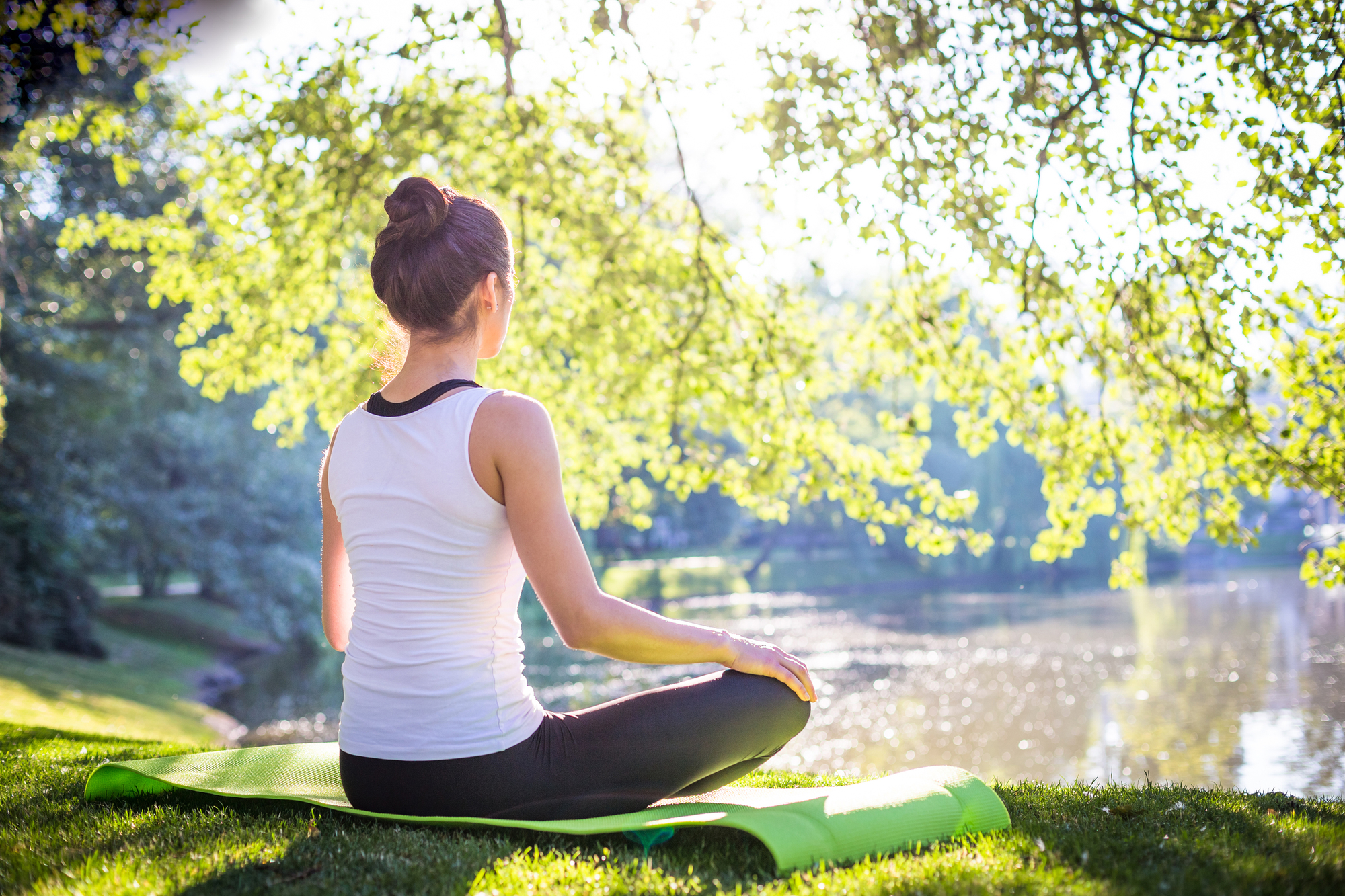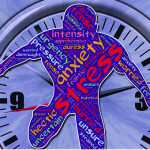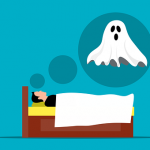There is a high chance that you are stressed, which is why you are reading this article. According to recent studies, stress levels in Americans are higher than ever before, to the point where some people are calling it an “epidemic.”
Do you know how to relax your mind?
Many people have difficulty relaxing due to working long hours, problems at home, or worrying about future events.
If you don’t learn to relax, the consequences could be deadly. Stress can lead to high blood pressure, hives, and other health problems. Don’t let your inability to relax ruin your health!
Most people want to relax, but their minds are so busy thinking about everything going in their lives that it seems nearly impossible to reach a calm state of mind.
We have provided a list of 13 tips below on how to relax your mind so that you can have mental clarity and break free from the stressors of everyday life.
1. Deep Breathing Exercises
When your mind is stressed, you need to try deep breathing exercises.
Even though it may seem counterintuitive, deep breathing can help you relax. These exercises have been shown to be helpful for reducing stress.
You should practice deep breathing every day to reduce stress and anxiety.
Here are 3 options:
- Hold your breath for about seven seconds. Then exhale slowly for about eight seconds.
- Close your mouth and breathe through your nose, inhaling for at least four seconds. Hold for four seconds. Exhale through your mouth for four seconds.
- Breathe in for eight seconds and then breathe out for eight seconds. Repeat this process. This is a good way to relax your mind and reduce stress.
2. Meditation
If you are feeling overwhelmed by stress, try meditating as a way to get away from it all.
You can also do this while walking. Meditation can help clear your mind by focusing on a certain place, thought or word. To begin, find a comfortable position sitting, lying down or kneeling. You can also do this while walking.
Find a place where you will not be disturbed and make yourself comfortable. You may find it helpful to use a meditation cushion. It can be difficult to achieve a state of tranquility when you are uncomfortably seated on a hard floor.
To completely clear your mind, you will need to meditate for at least ten minutes. It is important to make sure that you keep your eyes closed in whatever position you get in.
There is a common misconception that when you meditate, your mind will become completely clear. However, it is more likely that you will be met with a barrage of intrusive thoughts. It is normal to have intrusive thoughts. Ignore them and focus on something positive instead. Your mental focus will eventually help to clear your mind from stress and worries.
If you’re having trouble sleeping, meditation may be a good option for you. Mediation for 10-20 minutes will help you to focus and quiet your mind so you’re not up all night thinking about random things.
Although it may be difficult to learn how to meditate, it is worth it because it is an excellent way to reduce stress.
3. Visualization
Visualization is another way to calm your mind. This technique is similar to meditation, but there is one difference. When you meditate, you focus on your breath and try to clear your mind. When you visualize, you focus on a certain image.
You will need to focus on a peaceful scene instead of a word or thought. Make sure to focus on the scene for as long as possible.
Concentrate all of your effort and enthusiasm on creating a serene image in your head. Once you’ve accomplished this, you’ll feel calm. Plus, your concerns will vanish.
People who have trouble thinking positively can benefit from visualization.
If you’re finding it hard to focus because you’re worrying about all the bad things in your life, try using visualization to get a more positive outlook.
4. Progressive Muscle Relaxation
Progressive muscle relaxation is an excellent way to reduce stress. With practice, you will be able to effectively clear your mind of stressors.
So, how does it work?
Although it may seem counterintuitive, you can actually achieve muscle relaxation by first tensing your muscles.
Next, loosen up your muscles to help change your mindset and allow your mind and body to relax.
Starting with your feet, or vice versa, tensing each muscle for 5 to 10 seconds is common.
5. Yoga
Yoga can help you relax your mind and body.
Yoga is very similar to stretching and it is low impact so it is good for most people.
In order to do yoga effectively, you need to be able to focus intently on each specific pose. This means that your mind will be occupied and you won’t be able to focus on anything else.
Therefore, by practicing yoga, you can achieve a state of peace for your entire body and mind. This is why yoga is one of the best ways to relieve stress.
There are many ways to get started with yoga. You can watch videos online, or sign up for a local yoga class if you want in-person instruction.
6. Drinking Plenty of Water
Did you know that water can help you relax? It’s true! Not only is water necessary for keeping your body hydrated and free of toxins, but it can also help to calm your mind. So next time you’re feeling stressed, try taking a break to have a glass of water.
If your body contains a lot of toxins, it is likely that your mind will have more difficulty concentrating.
Water will help remove toxins from your body, making it easier to focus on what you need to do.
Each person should drink at least eight glasses of water per day. If you can’t manage to drink the recommended amount of water per day, try adding some lemon juice to water to make it more palatable. You can also invest in a reusable water bottle to make it easier to stay hydrated on the go.
7. Eat the Right Foods
You should also know that there are some foods that can help promote relaxation. Foods that are high in selenium, magnesium, or tryptophan can help decrease the hormones that increase anxiety and stress.
They may also be able to increase the levels of hormones that can have a positive effect on mood, for example by provoking feelings of happiness and calm.
If you’re looking to relax more, consider adding dark chocolate, nuts, berries, spinach, apples and tuna to your diet. These foods can help promote a sense of calm.
8. Body Scan Meditation
This is a type of meditation in which you focus your attention on different parts of your body, beginning with your feet and working your way up.
You focus on how each part of your body feels, without attaching a positive or negative label to the sensations.
- Lie on your back, legs uncrossed, arms relaxed at your sides, eyes open or closed. Focus on your breathing for about two minutes until you start to feel relaxed.
- Turn your focus to the toes of your right foot. Notice any sensations you feel while continuing to also focus on your breathing. Imagine each deep breath flowing to your toes. Remain focused on this area for three to five seconds (or more).
- Move your focus to the sole of your right foot. Tune in to any sensations you feel in that part of your body and imagine each breath flowing from the sole of your foot. After one or two minutes, move your focus to your right ankle and repeat. Move to your calf, knee, thigh, hip, and then repeat the sequence for your left leg. From there, move up the torso, through the lower back and abdomen, the upper back and chest, and the shoulders. Pay close attention to any area of the body that causes you pain or discomfort.
- After completing the body scan, relax for a while in silence and stillness, noting how your body feels. Then slowly open your eyes and stretch, if necessary.
9. Self-Massage
A professional massage can do all of the following: reduce stress, relieve pain, and ease muscle tension.
Although you may not be aware of it, you can experience some of the same benefits from self-massage at home or work as you would from receiving a massage from a loved one.
Self-massage is a great way to de-stress. You can do it at your desk, on the couch, or in bed. It only takes a few minutes and can really help you relax.
To relax, you can use aromatic oil, scented lotion, or combine self-massage with mindfulness or deep breathing techniques.
A five-minute self-massage to relieve stress
A mix of strokes usually does the trick in terms of relieving muscle tension. something like light chops with the edge of your hands, or tapping with fingers or cupped palms.
To relieve muscle tension, use your fingers to apply pressure to knots in the muscle. Use a kneading motion across the muscle, and try long, light strokes.
You can apply these strokes to any part of the body that falls easily within your reach. For a short session like this, try focusing on your neck and head:
- Start by kneading the muscles at the back of your neck and shoulders. Make a loose fist and drum swiftly up and down the sides and back of your neck. Next, use your thumbs to work tiny circles around the base of your skull. Slowly massage the rest of your scalp with your fingertips. Then tap your fingers against your scalp, moving from the front to the back and then over the sides.
- Now massage your face. Make a series of tiny circles with your thumbs or fingertips. Pay particular attention to your temples, forehead, and jaw muscles. Use your middle fingers to massage the bridge of your nose and work outward over your eyebrows to your temples.
- Finally, close your eyes. Cup your hands loosely over your face and inhale and exhale easily for a short while.
10. Rhythmic Movement and Mindful Exercise
The idea of exercising may not sound particularly soothing, but rhythmic exercise that gets you into a flow of repetitive movement can produce the relaxation response. Examples include:
- Running
- Walking
- Swimming
- Dancing
- Rowing
- Climbing
For maximum stress relief, add mindfulness to your workout.
Not only will rhythmic exercise help you relieve stress, but adding a mindfulness component can benefit you as well.
When exercising, it is important to be present and aware of how your body feels. This will help you to focus on the exercise rather than any daily worries or concerns.
Instead of zoning out or staring at a TV, try to focus on the sensations in your limbs and how your breathing complements your movement while you exercise.
To focus your attention while walking or running, pay attention to the sensation of your feet touching the ground, your breathing pattern, and the feeling of the wind against your face.
When working out by resistance training, it is important to remain aware of your breathing and how your body feels. If your mind begins to wander, bring your focus back to your breathing and movement.
11. Tai Chi
You have probably seen tai chi if you have ever seen a group of people moving slowly and in sync in a park. Tai chi is a series of slow body movements that you do at your own pace.
Focusing your attention on your movements and breathing keeps your mind in the present, which can help you feel more relaxed.
Tai chi is an effective workout for people of all ages and fitness levels, including older adults and those recovering from injuries.
It’s best to learn Tai Chi in a class or from a private instructor. Once you learn the basics, you can practice alone or with others.
Tips for Starting a Relaxation Practice
Although it may take some time to get used to, spending at least 10 to 20 minutes a day practicing relaxation techniques can have a profound impact on stress relief.
Doing this will help you form the habit of practicing regularly. You should set aside time in your daily schedule for practicing. If you can, schedule a set time once or twice a day for your practice. This will help you get into the habit of practicing regularly.
If you have a lot going on, try to meditate while you’re commuting on public transportation, take a break from yoga or tai chi at lunchtime, or be mindful of your walking while you’re exercising your dog.
Make use of smartphone apps to help with relaxing. Many people find that having an app or audio guide helps them establish a regular routine and keep track of their progress.
Although relaxation techniques such as meditation can have great benefits, it may take some time and practice to start seeing these results. The more consistently you do these techniques, the sooner you will start seeing the benefits.
If you don’t feel like working out for a few days or even a few weeks, that’s okay. Just start again and slowly increase your activity until you’re back to your old routine.
READ MORE: 19 Ways To Get Inner Peace And Happiness









